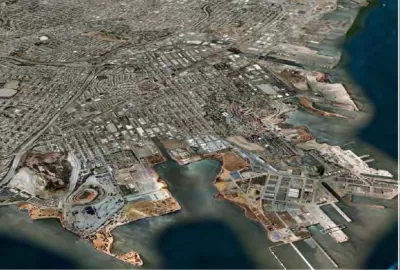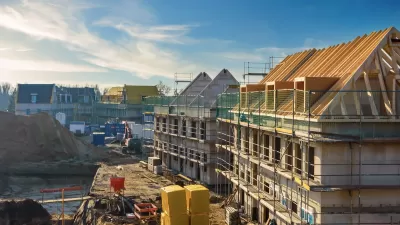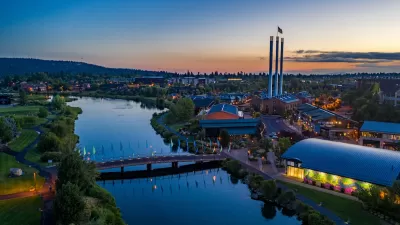Plans for numerous large-scale developments in the region mean thousands of housing units should be on the way, but constant delays and setbacks have left projects nowhere near completion.

"At a time when housing is needed as soon as possible to stem the tide of displacement and homelessness, at least 75,000 units in the [San Francisco] Bay Area are part of mega-developments — mostly on former industrial or military sites — that are frequently sidetracked for years or even decades due to long approval processes, high infrastructure costs, complicated environmental cleanup issues and financing difficulties," writes J.K. Dineen.
Three San Francisco redevelopment projects planned almost a decade ago — Hunters Point Shipyard, Treasure Island, and Parkmerced — will add 27,500 units to the city’s housing stock. But the projects are not close to delivering the affordable housing that the city desperately needs.
"While the projects look promising on paper, the reality has been different. After nine years, only 350 homes — 1.3% of the total — have been completed. Even as housing prices have skyrocketed and developers have scrambled to build condos and apartments, progress at the three mega-developments has languished," says Dineen.
The Bay Area has seen some megaproject successes, but critics say these larger, costlier developments are not the best strategy for tackling the state’s dire housing crisis, notes Dineen. "While the state is pressuring communities to build their fair share of housing, megaprojects allow politicians and planners to take credit for permitting lots of units, giving them political cover when downsizing, delaying or rejecting smaller infill housing projects that would actually get built, said state Sen. Scott Wiener, D-San Francisco."
FULL STORY: Bay Area megaprojects fail to deliver on big housing promises

Study: Maui’s Plan to Convert Vacation Rentals to Long-Term Housing Could Cause Nearly $1 Billion Economic Loss
The plan would reduce visitor accommodation by 25,% resulting in 1,900 jobs lost.

North Texas Transit Leaders Tout Benefits of TOD for Growing Region
At a summit focused on transit-oriented development, policymakers discussed how North Texas’ expanded light rail system can serve as a tool for economic growth.

Why Should We Subsidize Public Transportation?
Many public transit agencies face financial stress due to rising costs, declining fare revenue, and declining subsidies. Transit advocates must provide a strong business case for increasing public transit funding.

How Community Science Connects People, Parks, and Biodiversity
Community science engages people of all backgrounds in documenting local biodiversity, strengthening connections to nature, and contributing to global efforts like the City Nature Challenge to build a more inclusive and resilient future.

Alabama: Trump Terminates Settlements for Black Communities Harmed By Raw Sewage
Trump deemed the landmark civil rights agreement “illegal DEI and environmental justice policy.”

Dear Tesla Driver: “It’s not You, It’s Him.”
Amidst a booming bumper sticker industry, one writer offers solace to those asking, “Does this car make me look fascist?”
Urban Design for Planners 1: Software Tools
This six-course series explores essential urban design concepts using open source software and equips planners with the tools they need to participate fully in the urban design process.
Planning for Universal Design
Learn the tools for implementing Universal Design in planning regulations.
City of Santa Clarita
Ascent Environmental
Institute for Housing and Urban Development Studies (IHS)
City of Grandview
Harvard GSD Executive Education
Toledo-Lucas County Plan Commissions
Salt Lake City
NYU Wagner Graduate School of Public Service





























